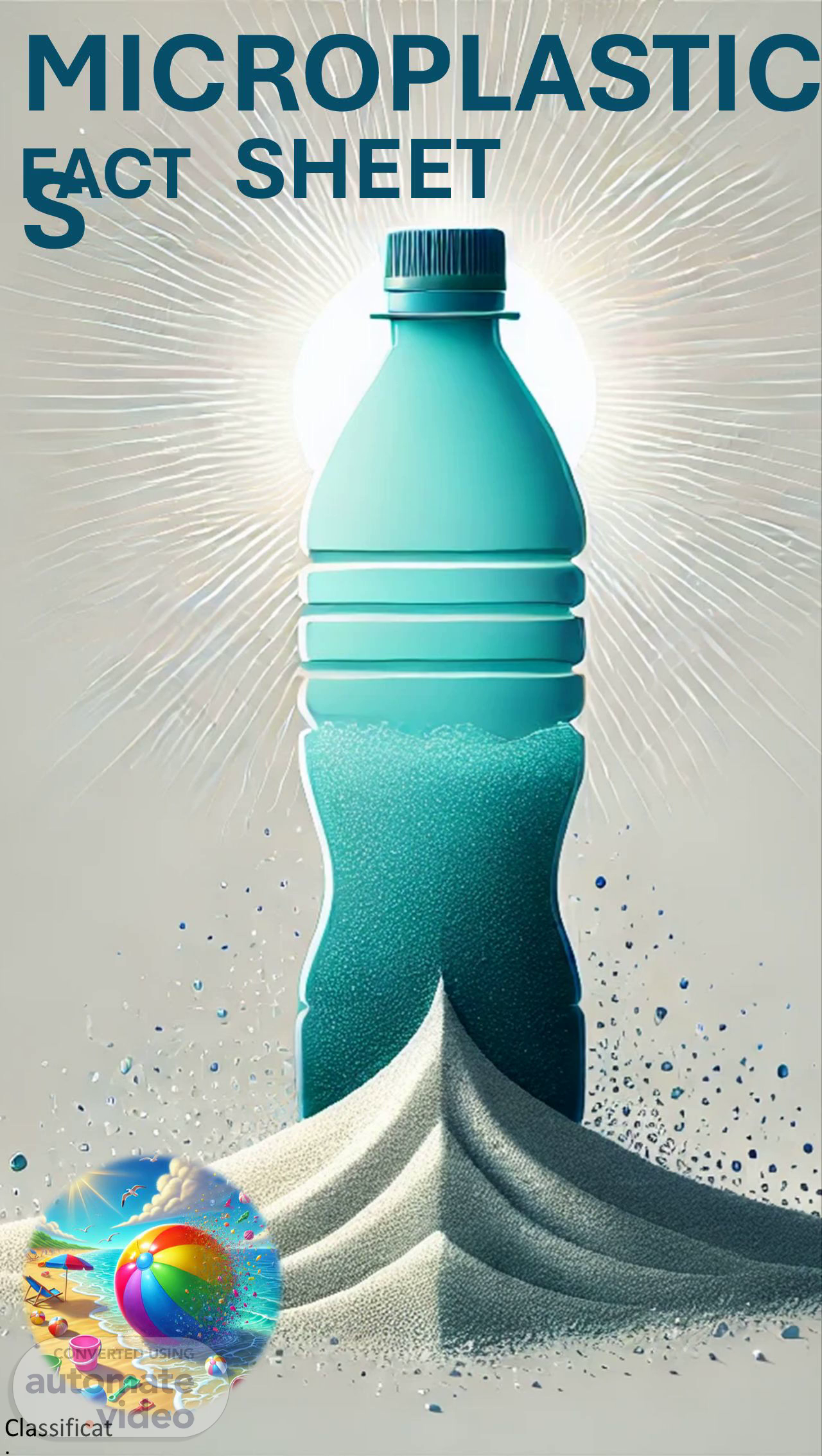Scene 1 (0s)
MICROPLASTICS. FACT SHEET. [image] A beach with a colorful ball and buckets Description automatically generated.
Scene 2 (8s)
What is Microplastics ?. Microplastics are small plastic pieces or fibers that are smaller than 5 mm in size. These pieces are small enough to fit on the tip of your finger, while some cannot even be seen with the human eye. Microplastics are small, lightweight and sometimes airborne. When they enter the environment, they move between air, freshwater, land, animals, humans and the marine environment, forming a global microplastic cycle..
Scene 3 (1m 5s)
Types of microplastics ?. [image] A group of blue objects Description automatically generated.
Scene 4 (1m 39s)
How do microplastics get into the environment?. [image] A diagram of a water treatment Description automatically generated with medium confidence.
Scene 5 (2m 9s)
Impacts. Morphological changes were detected in the marine phytoplankton. Effects on the development of marine zooplankton and other invertebrates. Microplastics in the larvae of marine organisms affects growth and may even cause death.. The small, sometimes sharp-edged plastic particles can injure the stomach and intestinal tract or the gills of the organisms, preventing them from feeding. Microplastics have been detected in human organs including in the colon and placenta. Inhaled microfibers have been found in lung tissues, where they can cause inflammation, cell and tissue damage and respiratory lesions. A review of research published from 2019-2020 revealed 60% of fish studied globally contained microplastics..
Scene 6 (3m 7s)
Yang, H., Chen, G., Wang, J.,, 2021.icroplastics in the Marine Environment: Sources, Fates, Impacts and Microbial Degradation Ocean Conservancy., 2023. https://oceanconservancy.org/wp- content/uploads/2023/02/Microplastics- Fact- Sheet. https://marinedebris.noaa.gov/what-marine- debris/microplastics Sussarellu R., Suquet M., Thomas Y., Lambert C., Fabioux C., Pernet M.E.J., Le Goic N., Quillien V., Mingant C., Epelboin Y., et al. Oyster reproduction is affected by exposure to polystyrene microplastics. Proc. Natl. Acad. Sci.USA.2016;113:2430–2435. Thompson, R.C.; Moore, C.J.; vom Saal, F.S.; Swan, S.H. Plastics, the environment and human health: Current consensus and future trends. Philos. Trans. R. Soc. Lond. B Biol. Sci. 2009, 364, 2153–2166. Fate and Impacts of Microplastics in the Environment: Hydrosphere, Pedosphere, and AtmosphereFatima Haque and Chihhao Fan, 2023. Fact sheet on microplastics in waters www.lifebluelakes.eu / [email protected] ..
